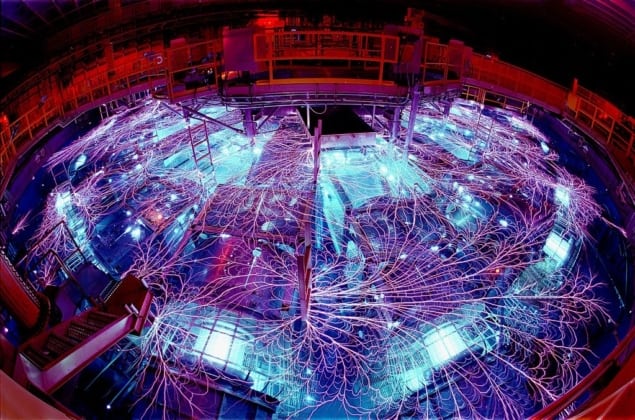
Robust new calibration standards for studying materials at extreme pressures have been developed by researchers in the US. Dayne Fratanduono at the Lawrence Livermore National Lab (LLNI) and colleagues used dynamic compression experiments to establish clear relationships between the pressures and volumes of both gold and platinum at terapascal (TPa) pressures. These standards could better coordinate the findings of independent high-pressure experiments and theoretical predictions.
Terapascal pressures are tens of million times greater than atmospheric pressure and have profound effects on structures of atoms and the intermolecular forces that hold materials together. Indeed, the quantum mechanical pressure that prevents an electron from being sucked into an atomic nucleus is in the terapascal range.
Giant planets
Such pressures can transform gases such as hydrogen, oxygen, and xenon into solid metals and even make some materials room-temperature superconductors. Terapascal pressures can be found at the centres of giant planets – with Jupiter having core pressures as high as 7 TPa. As a result, the ability to reliably study materials at terapascal pressures in the lab benefits astronomers and materials scientists alike.
Experiments that generate extreme pressures tend to fall into two categories: static and dynamic. Static experiments usually involve diamond anvil cells, which compress femtolitre-scale samples between hard diamond tips for indefinite periods of time. Diamond anvils are now approaching terapascal pressures but dynamic experiments can already achieve pressures as high as 50 TPa. These experiments crush larger, millimetre-sized samples by driving compression waves through them – although extreme pressures can only be maintained for a few nanoseconds.
With such a diversity of experimental techniques available, robust calibration standards are crucial in ensuring that independent experiments and theoretical studies can be reliably compared. In their study, Fratanduono’s team used two facilities to carry out dynamic compression to 1 TPa on both gold and platinum samples. The National Ignition Facility at LLNI used lasers to create the extreme pressures, while the Z Pulsed Power Facility at Sandia National Laboratory created the pressures by harnessing the rapid release of a large amount of stored electrical energy.
Strong agreement
From measurements made using each technique, the researchers established the relationship between pressure and volume in both metals. Despite a roughly order of magnitude difference between the sample sizes and compression times in the two techniques, the pressure-volume relationships showed strong agreement with each other. In addition, the new measurements agreed with the results of previous static experiments involving diamond anvil cells. This was particularly impressive, since the differences in sample sizes and compression timescales between static and dynamic experiments spanned many orders of magnitude.
Overall, the experiments provide reliable new standards for the behaviour of gold and platinum at terapascal pressures. By referring to them, future researchers will be able to calibrate their findings far more easily. Fratanduono and colleagues now hope to do similar calibration measurements on many more materials.
The research is described in Science.
